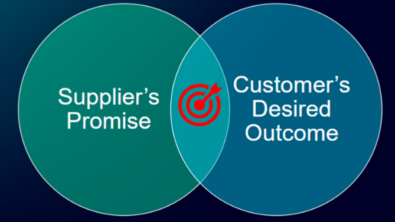Journey to Recurring Revenue Series Part II: The need for Customer Success

Changes and customer value realization
This is one crazy year! You thought you went through a lot of change last fiscal year, hold on tight because more change is coming. Last week’s blog on adaptability discussed the need to adapt and to infuse a culture of agile thinking in your FY21 business planning activities due to all the changes still expected to come. This week’s blog will discuss a key change in customer’s buying preferences and the need to step up and incorporate a key competency in your team.

COVID-19
The COVID-19 epidemic slammed changes into your door. You didn’t ask for change, and likely preferred to avoid it for a little while, but not this time. COVID forced you to engage with your customers differently and learn how to work with your team remotely. We saw new systems and processes created to support the new way of engagement and working. One of the most significant changes was how COVID pushed many customers to move from a CAPEX to an OPEX model, driving up subscription sales. As Forbes contributor Sam Page puts it: “Businesses must embrace change to remain relevant.”
Moving to a recurring revenue business model
For software companies and their partners, this year thrust them towards subscription business faster than ever. We knew customers were moving that way, gradually, but this year showed a massive jump in subscription sales due to a lack of cash flow caused by business closures and COVID-19.
Great! Everyone is finally moving in the right direction and closing subscription deals. Better for everyone concerned in the short and long run, right? Only if your business is ready and can support the new processes and systems required to maintain your subscription sales and customers is this a good thing to be pushed into quickly.
“For consumers, the SaaS revolution is driven by easy access to powerful tools, reliable and predictable costs, and the promise of continuously updated features and capabilities. For businesses, it’s the promise of smaller infrastructure footprints, better cost controls and greater agility because of the iterative nature of SaaS solutions: develop, release, refine, repeat.”
Forbes, Aug 2019, Varma Kunaparaju
Short-term benefits for customers: less money and infrastructure required upfront to get the solution benefits they need to be successful and it’s easierto switch vendors if they are not happy.
Long-term benefits for technology companies and partners: more recurring revenue coming in year after year if they provide focused attention on their customer base and keep customer churn to a minimum.
Customer value realization and customer delight
For years now, you have heard how important it is to be your customer’s trusted advisor and support them on their journey to value realization. This is ideal for the software vendor and partners in a perpetual world as they create reference accounts and maintain strong long-term customer relationships.

However, suppose a company or salesperson believes a specific account does not have any expansion opportunities, they may pay less attention to that customer once the solution is installed and deployed into production. This is where the scales start to balance in the world of recurring revenue because post-sales teams now become equally, if not, more important than the initial sale
Remember, with a subscription deal, the customer only bought a certain amount of ‘time’ with the software. They often do not have a hefty investment up front, so it is easier for them to change solution providers. Heck, we do it all the time, at least here in the US, with our internet and TV providers, for example: commit to a one- or two-year contract, and when that is up, we move to another supplier if we were not happy with their service and the value received. Alternatively, we can pay more each month so we are not locked into a provider and can change easily at any time.
The same is true for software solution providers; service and value are the keys to renewing. For the example of the internet and TV provider above: Am I receiving the value I expected in terms of speed and uptime that was promised? If the answer is ‘no’ to the value question, I would look for another internet service provider, especially if I did not feel the company offered adequate support to any issues I had.
Customer value realization in a recurring revenue world is the key to success. In TSIA’s The Key to a Successful Digital Transformation Strategy, they state that the “time of make, sell, ship is history, and in recurring revenue, subscription-based deal, the moment of truth is actually at renewal. Therefore, solution providers can no longer just sell, install, train, and go, and then expect to get the renewal order when their term is up. Now, they must work with their customers to identify and agree on the solution value elements and track them to ensure a high focus on your customer realizing the business values they expect. Solution providers will also need to provide enablement at all levels for adoption: adoption of the new business processes, adoption of the changes, and, most importantly, genuine stakeholder buy-in for the new solution and customer self-enforcement. A straightforward approach to starting the buy-in process is through the use of cascading communications.
The role of Customer Success practitioners is typically not found in a business steeped in the perpetual business model; however, it is integral to all businesses maintaining a recurring revenue model. In future blogs, I will share more about Customer Success and other roles, and the changes needed to support a hybrid perpetual and subscription business model.
Christine Carter is the Global Director for Solution Partner Services and Support Enablement. She has been in the PLM business for over 30 years, leading projects for enterprise customers focusing on cross-organizational business process solutions and adoption management. In addition to services and support, Chris is the initiative leader for Siemens Solution Partners’ Journey to Recurring Revenue.



Comments